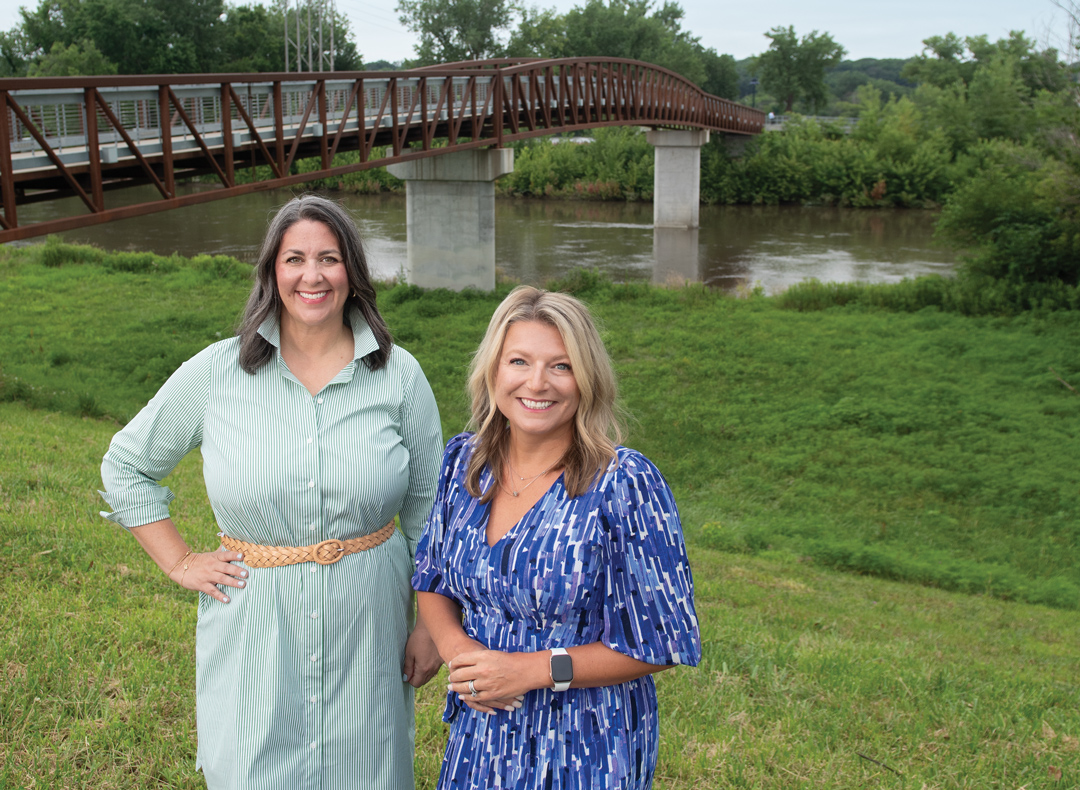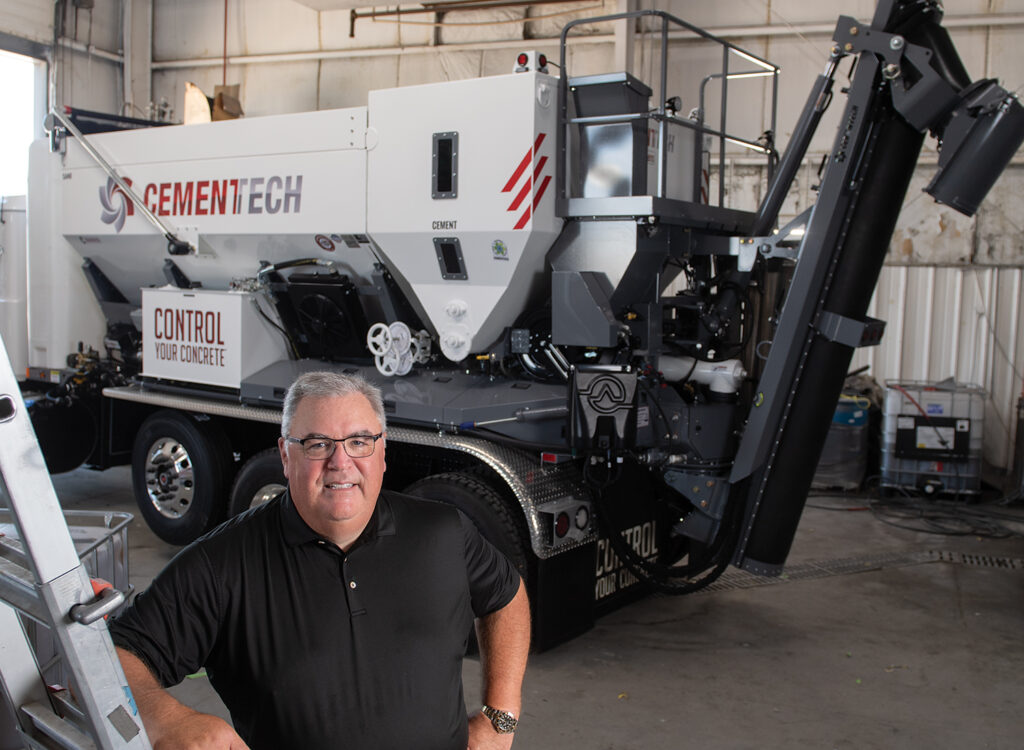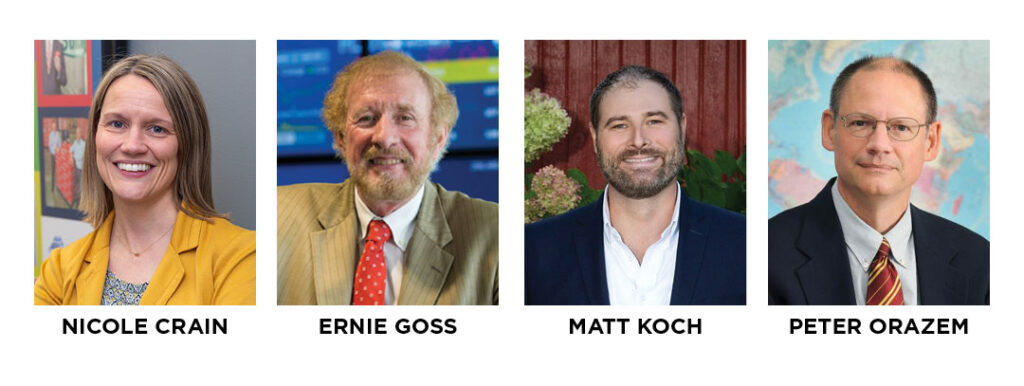How ICON Water Trails, Great Outdoors Foundation collaborate to support recreation while tackling water quality issues

Gigi Wood Aug 8, 2025 | 6:00 am
13 min read time
3,008 wordsAg and Environment, Business Record Insider, Economic Development, Statewide NewsCleaner waterways, updated recreational opportunities and a boost to economic development are a few of the outcomes of a partnership between two statewide organizations. The Great Outdoors Foundation and Iowa Confluence Water Trails are leading an effort to activate water trails and improve conservation efforts throughout the state. Their projects have found success with public-private partnerships, as the groups’ goals overlap with that of business and government interests: attracting and retaining residents.
The two groups work with multiple partners, from Polk County Conservation to the Iowa Department of Natural Resources, to complete the necessary steps in multiple jurisdictions to create improved waterways for pursuits like fishing and kayaking, while protecting and conserving the water in those rivers and creeks.
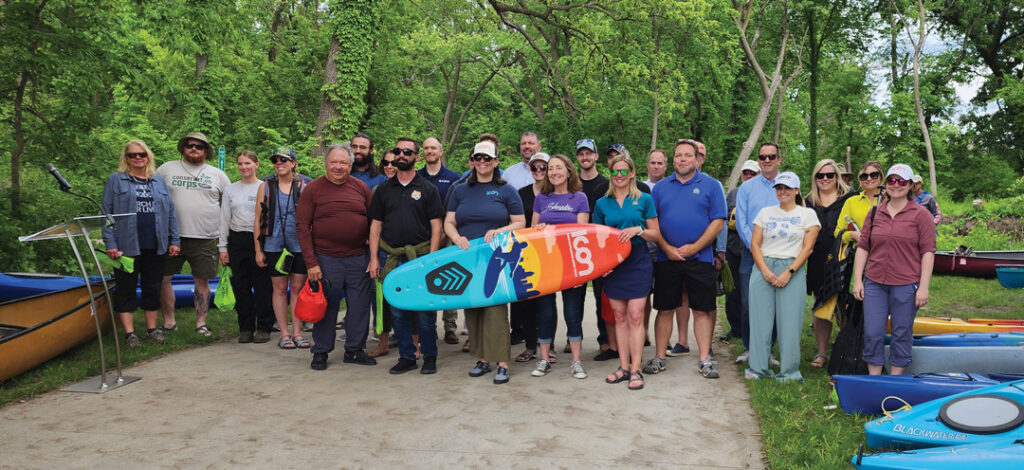
Members of ICON Water Trails, Polk County Conservation, the Iowa Department of Natural Resources and others celebrate the state water trail designation at Beaver Creek in Johnston in May. Photo by Gigi Wood
ICON Water Trails
ICON Water Trails works to improve the safety and access to rivers by installing kayak launches and improved safe access along riverbanks, as well as improvements to nearby walking trails, making it easier for people to reach the riverways and creeks. The organization launched in 2021 as a public-private partnership to improve recreational opportunities by way of 80 improvements along 150 miles of rivers and creeks in Central Iowa.
Several organizations played a role in starting ICON, including the Central Iowa Water Trails Consortium, Capital Crossroads, Catch Des Moines, the Community Foundation of Greater Des Moines, Des Moines Area MPO and the Greater Des Moines Partnership — with the Great Outdoors Foundation leading its inception.
Stephanie Oppel, ICON’s executive director, said that ICON is a reality because of the work of the Great Outdoors Foundation.
“They are innovators, they are collaborators. They were the incubator for ICON Water Trails,” she said. “So many members of the community came together around the idea, but someone had to step up and say, ‘We’ll take on the nitty gritty of starting an organization’ and so that was housed within the Great Outdoors Foundation while ICON found its legs. They helped ICON set up a governance structure and helped ICON be ready to launch as its own nonprofit organization. This July, we’re celebrating four years as our own 501(c)(3) and we still have an incredibly strong partnership. I don’t see us ever not partnering.”
The ICON system had 250,000 users and yielded $20 million in total economic output in one season in 2022.
“Getting people closer to the water and experiencing what the water resource has to offer, that builds stewardship for natural resources, which is so important,” Kayla Lyon, director of the Iowa Department of Natural Resources, said at the celebration of the state water trail designation at Beaver Creek in Johnston in May.
The Beaver Creek project is one of many on ICON’s plate. It added new and improved features to a river access point at Lew Clarkson Park, such as restrooms, lighting, streambank improvements, parking, stormwater infrastructure, native plantings, trailhead signage and connections to adjacent hiking trails. It’s the second water trail access point in Johnston; the first was completed in 2019. Johnston Mayor Paula Dierenfeld said there is increased interest from residents, especially adults in their 20s and 30s, for more accessible riverways.
“It’s a quality-of-life amenity, both for the residents here as well as for visitors coming into the community. It draws people from other states into those communities to take advantage of what the water trails have to offer,” Dierenfeld said. “I hear from our residents that we need diverse options in recreational opportunities. We have a very young population in Johnston. They love being outside and we have almost 50 miles worth [of recreational trails] just within Johnston. They’ve loved our recreational trails now for a number of years. This just adds to those options that they have to be able to get outside with their families and recreate and enjoy nature.”
A third access point in Johnston will be created near the Merle Hay Bridge and Interstate 80/35.
Great Outdoors Foundation
ICON Water Trails is one of many initiatives led in part by the Great Outdoors Foundation.
The foundation creates public-private partnerships to improve conservation efforts and recreational projects throughout the state. The nonprofit helped make projects like Easter Lake improvements and the Jester Park Nature Center a reality.
“One of the ways that most people are familiar with us is we help jurisdictions, cities, counties, do a public private partnership to raise money for outdoor recreation projects,” said Hannah Inman, CEO of the foundation. “We really believe that recreation is a catalyst for conservation, and if people can see it, touch it, experience it, they’re going to care about it and invest in it.”
Inman said incubating ICON under its umbrella helped remove some barriers new nonprofits face.
“There’s a lot of stress on nonprofits, especially as they get started. And the more that we privatize services and systems, the more pressure there is,” she said. “To be efficient and build the skill set and to build in a sustainable way, we have shared resources from HR, accounting, even fiscal sponsorship and management. Over the years, ICON is starting to do more of their own but there’s going to be a back end that we all share, because it’s not mission driven to replicate HR services.”
Public-private projects like the ICON Water Trails can leverage more benefits for the state.
“All the projects that are going on with ICON, we’re using that to raise additional funds for water quality up and downstream. It’s a stacked benefit. You get recreation, you get water quality, you get economic development, but for lean, efficient nonprofits and other governmental agencies, this is the way that we can have a huge impact. But it always has to be through collaboration and innovation,” Inman said.
The two organizations come together at the intersection of recreation and conservation, Oppel said.
“It’s a mutually beneficial relationship. The more that we implement conservation best practices and improve the natural landscape, our water quality, all of those things, the more inviting it is for folks to come out and recreate,” she said. “At the same time, the more people get out and recreate, the more they care about the spaces. They take ownership, they have that personal connectivity and attachment. Recreation can be a catalyst for conservation, and conservation always makes recreation more fun and opens up more space and more opportunity for folks.”
Keeping riverways clean
Water quality has been at the forefront this summer as Central Iowa Water Works declared the first lawn-watering ban in the Des Moines area on June 12, due to high nitrate levels in the water supply. The high nitrate level, coupled with last year’s severe drought, early summer high-demand for lawn watering and heavy rains are making it difficult for the water utility to clean water fast enough to meet demand. Nitrate levels remained elevated throughout June and July, so the lawn watering ban stayed in place. But in recent weeks CIWW began a phased exit allowing residential and commercial users to water every other day .
Inman, who has been involved with water conservation for decades, said she isn’t surprised by the residential water situation.
“Our board doubled down on our investment in water quality and our focus in water quality about four years ago,” she said. “I think that there’s a lot of nuances around water quality. There’s not just one ubiquitous measurement for water quality, whether you’re recreating or drinking your water. It’s a different standard.”
National water quality standards were created in the 1930s. The first Farm Bills, especially the Soil Conservation and Domestic Allotment Act of 1936, set water standards to help reduce soil erosion after poor land management practices played a part in the development of the Dust Bowl.
“When we look at the delivery mechanism for water quality on a national scale, and more specifically, on an Iowa scale, it was built out of the 1930s Farm Bill, and it really wasn’t about water quality, it was about soil erosion at the time,” Inman said. “Think about how much agriculture as an industry has evolved and our food systems have evolved since then, but our conservation is still stuck in the 1930s.”
The foundation and its partners are working on several ways to improve water quality, from conservation projects on farms to state and federal policy changes.
“We think that there needs to be continuous, sustainable funding and passage of IWILL [Iowa’s Water and Land Legacy amendment]; the voters wanted it, it needs to happen,” Inman said. “Two, we need to remove barriers and red tape to allow large scale projects to happen with willing landowners, and we need to shorten the timing of those projects happening.”
Oppel said Iowa needs to do a better job of protecting water quality. She said high nitrates in drinking water are dangerous to human health, but recreating in rivers with high nitrate levels is not, as it is not dangerous to have skin contact with nitrates.
“Everybody knows there’s a water quality problem in our state and that we can do better,” she said. “That’s what ICON is all about. I think there are lots of opportunities to continue to educate people about the differences from an ICON perspective. Drinking water quality and recreational water quality are distinct. They both have important parameters. If you improve the water quality for drinking water, it’s going to make recreational water quality better. It all goes hand in hand, but with the nitrates that are in the water right now, the issue that we are all dealing with in Central Iowa, you can still go out and recreate.”
The creation of a new model for water conservation
Creating waterways ready for recreation requires stabilizing riverbanks, clearing rivers and creeks of debris, creating wetlands and cleaning the river in northern Iowa. It means creating buffers upstream to naturally remove some contaminants from water before they reach the river. Water specialists have a new take on creating these buffers, a process called Batch & Build.
Contaminates enter rivers and streams through rural and urban runoff from crops and livestock as well as cars. Just as urban residents need cars and buses to get to work, farmers need to apply fertilizers for their crops to be successful. Throughout the state, privately owned farmland often butts up against riverways and creeks.
Buffer strips are a solution to addressing runoff but farmers often lack time and funding to maintain the buffers, and some are wary about allowing others onto their land.
“If we want to work with farmland, we have to work with farmers. We want to work with landowners. We have to work on their land,” John Swanson, water resources supervisor at Polk County Public Works said during a Great Outdoors Foundation-led tour of water conservation projects in Central Iowa.
In 2014, Swanson and another watershed coordinator were out teaching farmers about farm tile outlet saturation buffers to filter the nitrates coming from farmland. Farmers asked if it would reduce erosion or increase yields. The answer was no. Also, Swanson and his colleague needed the farmers to help pay for it.
The few farmers who said yes had to wait a year for the saturation buffer to be designed, then the farmer had to hire a contractor to install the buffer underground. The farmer then had to wait 30-90 days to be reimbursed, and that money would show up on a 1099 tax form at the end of the year. From 2015-2020, Polk County only installed five of those projects.
That all changed when a stormwater district commissioner, a local agricultural business leader and a watershed coordinator met for lunch.
They ran through some what ifs, like not charging the farmer for the project and zeroing in on specific parcels of land to target where conservation efforts would have the biggest impact.
They identified the landowners and farmers of those land parcels and assigned each one a project manager so the landowner only had to talk to one person about the project. The watershed coordinators asked landowners for permission to survey the farmland and after planting season was complete, the watershed coordinators would return with a design plan to install buffers. If the project reached the finish line, the landowner would receive $1,000. The group was able to survey 100 properties that year in Polk County.
Buffer designs were expedited and watershed coordinators sat down at kitchen tables with landowners and farmers and explained the project. No longer would the landowner need to hire a contractor and pay for the project, now called Wetland Wave. Instead, the work would be treated as a public improvement project, like fixing a road. After getting just five projects done in five years, the group had 52 projects signed up for buffer installations in one year. The next year, they landed 185 projects.
Through programs like the Great Outdoors Foundation’s Conservation Acceleration Fund and Wetland Wave, they were able to match donors with the cause to help pay for the buffers.
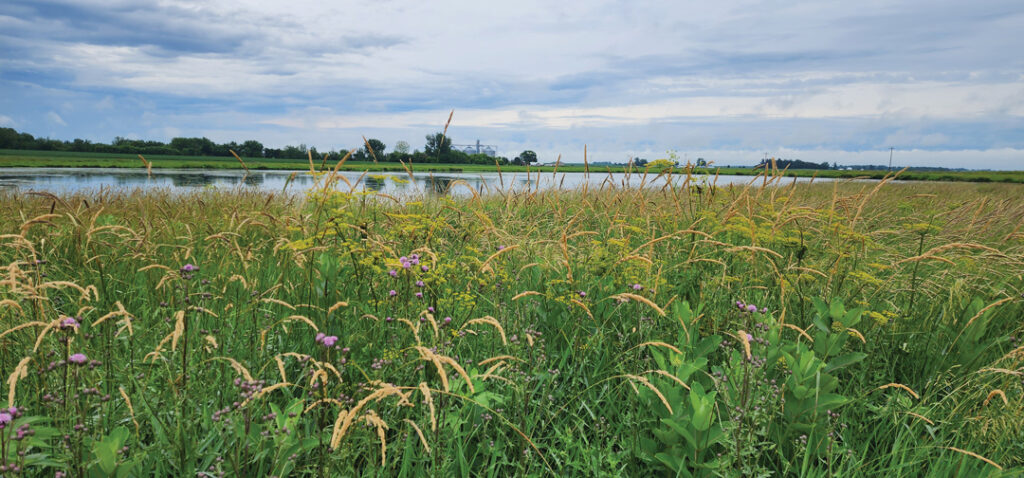
A batch and build wetland developed adjacent to farmland in Polk County. Photo by Gigi Wood
How Batch and Build works
When the watershed coordinators set out to find parcels of land where they could get the biggest bang for their buck, they found that farmers often had a wet corner on their land where the field and fence meet the road. These corners are perennially muddy spots that don’t produce much yield and are ideal for conservationists, because they are on the edge of the field, providing relatively easy access. Buffers, wetlands and other conservation methods can be added to those muddy corners for a high return on nutrient reduction. This process is called Batch and Build.
The landowner is asked if it can be turned into a wetland. In some cases, the muddy corner is purchased, converted into wetland and it becomes a park. That way, the county pays to maintain it and it can be added to the local trail system and accessed by the public.
“Certainly, water quality is our No.1 goal,” Inman said. “But any time we can capture recreation, biodiversity, carbon sequestration, it makes the project even better.”
On average, these types of projects are seeing a 67% nitrate reduction. Some of the more common projects include:
Wetlands: Water comes into the area of land to create a natural pool of water, and bacteria in the wetland sequester the nitrates and release them as a nitrogen gas that naturally dissipates into the atmosphere. Typically 3 feet deep or less, the shallow water creates an anaerobic environment where good bacteria can grow.
Bioreactors: Similar to wood chips, bioreactors are buried underground. When the chips break down, the same bacteria found in wetlands grow, sequester the nitrates and release them.
Saturated buffers: Use soil and its carbon contents to develop the same bacteria found in wetland that sequester nitrates.
It typically requires 5 to 20 acres of wetland to treat a 1,000-acre watershed. The wetland usually costs about $60,000 to design, $500,000 to build, and $200,000 to the landowner for the easement. Swanson said the county is only pursuing specific, targeted sites that meet a variety of thresholds.
Conservation in practice on the farm
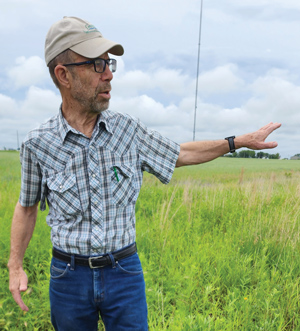
Slater is a town of 1,600 people west of Huxley, between Ames and Ankeny. That’s where Lee Tesdell lives on an 80-acre century farm. His great-grandfather, Severt Tesdahl, bought the farm in 1884 after emigrating from Norway.
Tesdell is a commissioner of the Polk County Soil and Water Conservation District, a member of the board of directors for the Center for Rural Affairs and professor emeritus of Minnesota State University in Mankato. Tesdell said he was interested in making his farm more resilient to climate change, so he began learning about different crops to grow and various buffers to incorporate into his land.
He grows alfalfa and orchard grass hay to feed his sheep, cover crops that prevent erosion and improve water infiltration, and Kernza, a perennial grain crop and type of wheatgrass that is sold for human consumption. Tesdell said growing corn and soybeans would put him at an operating loss. According to numbers from June, the cost to produce corn and soybeans was $4.27 and $11.38 per bushel, respectively. Selling those crops at the local co-op in June would have gotten him $4.07 for the corn and $10.27 for the soybeans per bushel.
These days, the challenge isn’t persuading a farmer to help or consider new conservation practices — it’s cost and red tape, Swanson said.
“We have people that want to work with us, but now it’s how do we get through all the processes, the bureaucracy, the government, all the steps of permitting and the $100,000 cost of just designing these things,” he said. “How do we succinctly work through the permitting process?”
Creating a wetland is a land use change and at times is scrutinized as closely as a chain store parking lot would be in some towns, he said. Another roadblock is the shortage of people available to move projects forward. There is one person at the state’s Natural Resources Conservation Service office who can approve conservation projects, said Jen Cross, vice president of strategic partnerships at Great Outdoors Foundation. Additionally, NRCS does not prioritize stream bank stabilization, which in some geographies can help water quality, Inman said.
“We advocate a lot for flexibility and allowing local people to make the right decision for their watershed, because a lot of times they’re the ones taking care of and understand what works the best,” Inman said.
Additionally, the Iowa Department of Agriculture and Land Stewardship does not have funding to support long-term maintenance of these projects, which is an additional challenge to achieving conservation goals, Cross said.

Gigi Wood
Gigi Wood is a senior staff writer at Business Record. She covers economic development, government policy and law, agriculture, energy, and manufacturing.

